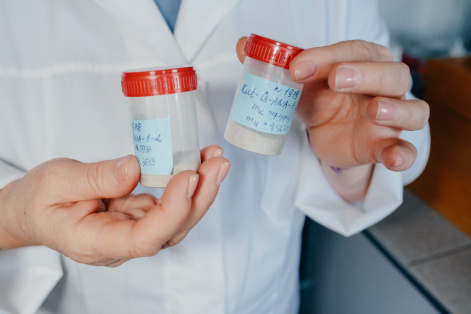Composite materials based on coal fly ash will help recycle radioactive waste
6 December 2022 г.

The development of nuclear energy is impossible without the development of technologies for the processing of radioactive waste. One of the widely used methods for removing hazardous compounds from solutions is the use of inorganic ion-exchange materials. Such materials, in fact, deposit radionuclides on their surface and transfer them from a dissolved to a solid form. This reduces the amount of waste and makes their subsequent disposal possible. In the future, composite sorbents should bind several chemical elements. However, the creation of such materials is associated with a number of difficulties.
Scientists from the Krasnoyarsk Science Center of SB RAS and the Siberian Federal University have developed a technology for the synthesis of finely dispersed zirconium-analcime materials that can simultaneously bind cesium and strontium isotopes from solution. Cenospheres obtained from coal fly ash became “a raw material” for the sorbent. The researchers determined the optimal composition of composite sorbents for precipitating toxicants, as well as the conditions under which the sorbent, together with toxic compounds, can be converted into a mineral form.
Hollow aluminosilicate microspheres, known as "cenospheres", are obtained from conventional coal fly ash. They include aluminum, silicon, impurities of other metals. In this work, scientists used cenospheres isolated from fly ash after burning Kuznetsk coal. In order to obtain composite sorbents, the researchers used cenospheres as a source of aluminum and silicon in combination with a zirconium compound. Scientists obtained zirconium-analcime spherulites in hot aqueous solutions under pressure; and these have the ability to bind cesium and strontium.
Scientists tested the ability of zirconium-analcime particles of different size and composition to extract cesium and strontium cations from the solutions of different acidity. The best indicators of binding of potential toxicants were observed in particles with a higher content of the zirconium-containing component.
The researchers then evaluated the possibility of including adsorbed forms of cesium and strontium into stable mineral-like compounds. For this, the sorbents after the binding of cesium and strontium were subjected to high-temperature treatment. The powder X-ray diffraction showed that upon increasing temperature up to 1000 °C, there appear new crystalline compounds of zirconium, aluminum and silicon in the composite, which can also include cesium and strontium. That means that the composite that bound cesium and strontium from the solution passed into another, more stable, mineral-like form. Such environmentally stable matrices containing radioactive compounds can be used for further long-term and environmentally safe storage of radioactive waste.
“As a result of a series of transformations, for the first time we obtained composite particles from cenospheres present in coal fly ash, which include analcime-type zeolite and hydrated zirconium dioxide. We also determined the conditions under which composite particles with increased sorption capacity are formed, and the conditions for their crystallization into a stable mineral-like matrix. In this work, we used solutions of non-radioactive isotopes, which are close in their properties to nuclear industry waste. At the next stage, it is necessary to test the effectiveness of the obtained composites in solutions with radioactive isotopes of these chemical elements,” explained Tatyana Vereshchagina, Doctor of Chemistry, a leading researcher at the Institute of Chemistry and Chemical Technology of SB RAS.
The results presented in the article are part of the complex work of Krasnoyarsk chemists on the development of technologies for handling radioactive waste using microspherical components of ash waste from thermal power. Previously, using aluminosilicate microspheres, the chemists showed the possibility of solidifying liquid radioactive waste containing cesium and strontium in a single-step autoclave process. Step by step, researchers are approaching the solution of the problem of efficient processing of large volumes of radioactive waste.
Share:
